
Julie Karabenick: Composition 59, acrylic on canvas, 30" x 30", 2005
Geoform was launched in the spring of 2005, about 15 months ago, with a beautifully designed site and a handful of participating artists. Today 76 artists from 15 countries are on the site. The work is satisfyingly diverse in size, format, medium, approach and expression, and the site appears to grow weekly. "Rick and I spent months and months reviewing and discussing artists in order to develop our criteria for inclusion—which is to say, sufficiently abstract and sufficiently geometric," says Julie. "The boundaries are subject to some redefinition and refinement as we continue on."
I was one of the first artists on the Geoform site and the subject of an early interview with Julie, so I’ve had a chance to see Geoform grow and flourish. Given that Julie also paints and curates (scroll halfway down the page of this link to see her curatorial efforts), Geoform, with its roster of artists and a growing number of artists interviews, is impressively robust. Julie and I correspond regularly by e-mail and have become good friends, so I’m sharing some of the conversation we had recently.
"From ‘geometric’ marks made on rock faces and cave walls and on human faces and bodies, extending far back into prehistory, to geometric patterns found in textiles and adorning pottery and masks and other objects in world cultures, this type of form has attracted me," says Julie. "During the early 90s, geometric shapes began appearing in my prints amongst the more representational elements." The figurative elements began to fall away, she says, and soon she found herself working abstractly. "I’m not sure I could have given a very good account of why this was happening, but I certainly was intrigued."
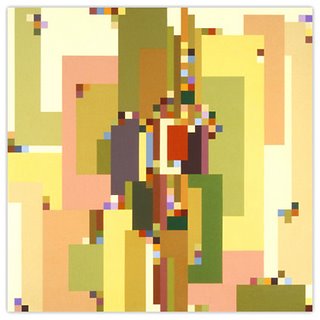
Julie Karabenick: Composition 64, acrylic on canvas, 30" x 30", 2006
Julie began looking more seriously at geometric form and structure in fine art. She acknowledges the Internet as a deep well of images. "On-line wandering and searching has become my primary means of discovering artists working in geometric abstraction," she says. (That’s how she found me. She called in late winter 2005 and we talked for an hour, growing the roots of a friendship that would grow surprisingly deep given the physical distance between us.) A developmental psychologist--PhD, University of Michigan, 1981--as well as a painter, Julie approached this change in her own painting with a readings in philosophy, anthropology, psychology, linguistics, neurophysiology, and various approaches to spirituality."As my files of research began to fill drawers, I decided I wanted to find some way of sharing this admittedly unsystematic and idiosyncratic ‘research,’" says Julie. Finding a creative partner in Rick Barnhart was the impetus she needed, and together they launched the Geoform site.

Julie Gross, an artist on Geoform, is the subject of a recent interview. This is one of her paintings: Blue Inversion, oil on linen, 32" x 32", 2004
 Gail Gregg, another artist on the site, is also the subject of an interview. Here, Kincaid, encaustic on panel, 36" x 36", 2003
Gail Gregg, another artist on the site, is also the subject of an interview. Here, Kincaid, encaustic on panel, 36" x 36", 2003
Geometric abstraction is no longer an art world flavor of the month. From Op Art and Hard-edge Abstraction in the Sixties, to a resurgence of Neo Geo in the Eighties, geometric abstraction in all its variations has evolved into a menu staple. Since art now is so much about the constantly new and titillating, a site like Geoform keeps geometric abstraction visibly fresh and tasty. "We hope the project helps raise the visibility of this type of art, perhaps encouraging curators to develop exhibitions to showcase it regionally or thematically," says Julie. Continuing with the food metaphor, she adds, "I say ‘thematically’ because there are many ‘flavors’ to sample—many motivations, sources of inspiration, artistic temperaments, stylistic outcomes involved. We are also happy if Geoform contributes to networking, communication, and/or collaboration among artistic kindred spirits."
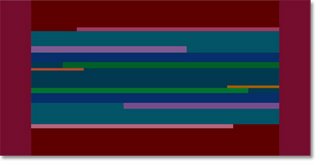 Burton Kramer: Resonant 2, acrylic on canvas, 30" x 60", 2001
Burton Kramer: Resonant 2, acrylic on canvas, 30" x 60", 2001
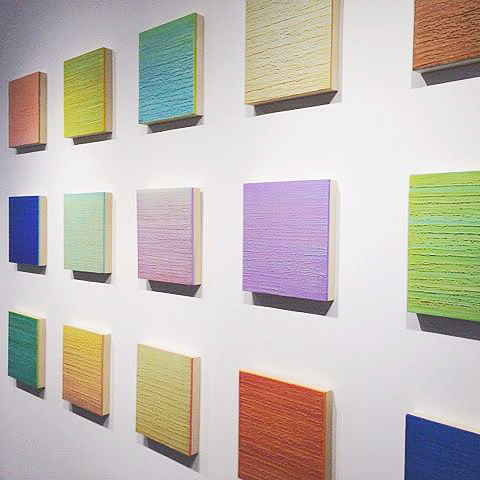
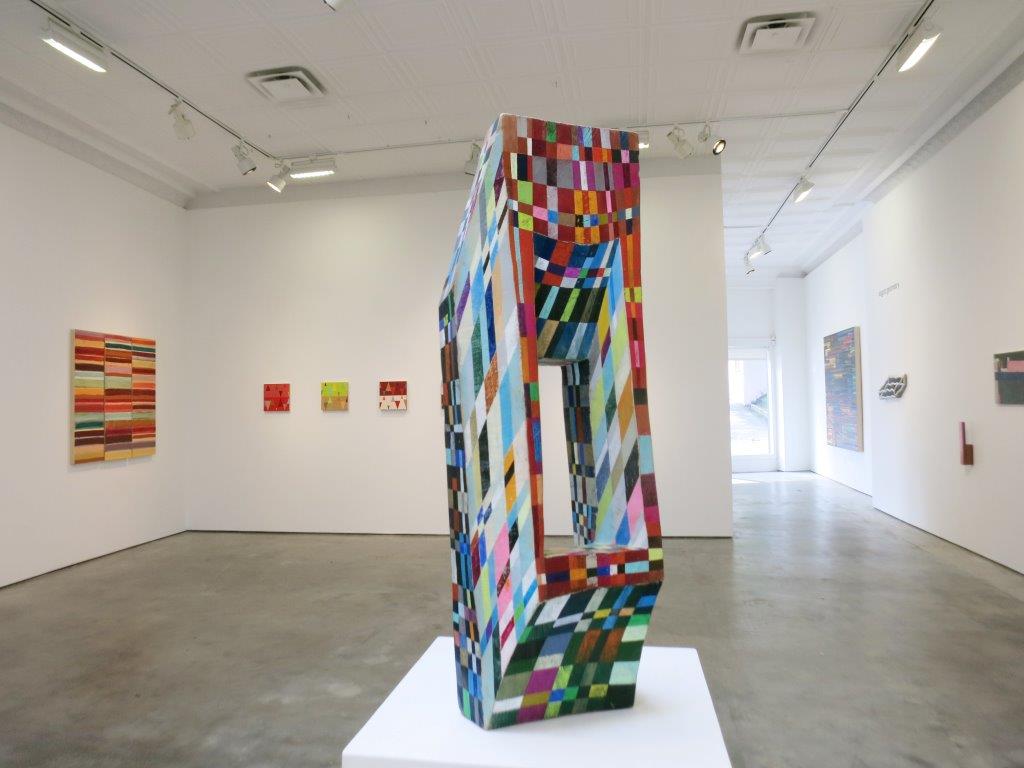


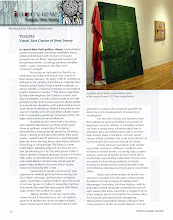
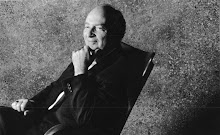
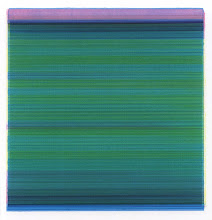



No comments:
Post a Comment